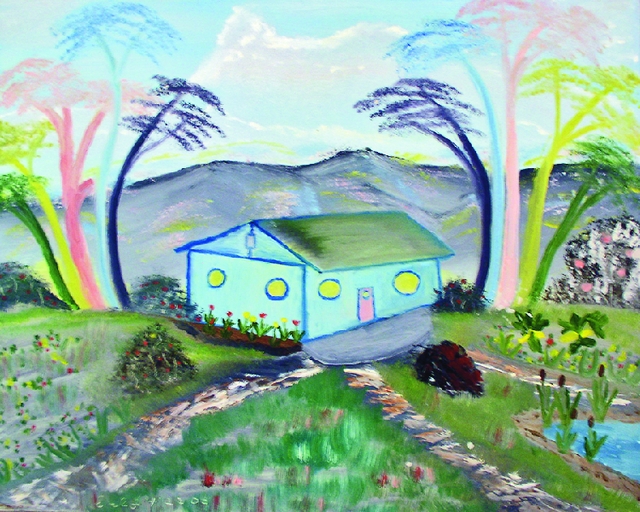The talking heads on a prime-time news station said Paul Tucker would be homeless. The Vermont resident spent too many days in the Good Samaritan Haven and took too long to get a real job, they said. Tucker would live on the streets, just like the people he was earning money for outside the local shopping mall with a red Salvation Army kettle and a bell. He spent his time doing charity work, calling for coins to help the less fortunate during the holiday season, instead of making an income. It seems homelessness can hit anyone, even those who would be saints. Albuquerque Health Care for the Homeless’ ArtStreet program is designed to build community and increase awareness of homelessness through making art. ArtStreet’s studio hours are open to anyone—with or without a home—who wishes to create artistic works in a safe, fun and open environment. Within the garage-like studio are stocks of supplies—fine papers, fabric, random found objects, tiles, oil paints, watercolors, metal wire, pastels—waiting to fulfill someone’s vision. Every year, the artists collaborate to put their work on display in a gallery show, and this year they present Home is Where the Art Is at the Lobo Theater.The ArtStreet artists are all bonded together by homelessness of their own or someone they know. That bond of commonality melds all the individual pieces into a cohesive exhibit, acknowledging that home is a place where one can be comfortable and free. Like art itself, home is what you make if it.A. Hayden’s mixed-media portrait, Katrina , bears a title that comes loaded with a semi-truck-sized burden of grief and suffering. Hayden’s use of 3-D objects painted in vivid, contrasting colors takes the semi-truck and slams it into a wall. We see a black skeleton splayed on the ground beneath a pile of blood-red skulls with bleeding hand prints. The feeling of devastation Hayden put into Katrina cuts deep emotionally, but we don’t see the backstory. We can only guess how Katrina has caused Hayden so much anguish, but we have one clue: homelessness—the reality tying everything on the wall together.Julianna Pelletier’s mixed-media wall hangings use odd found objects and merge them harmoniously on the canvas (which could be a block of wood, a box or the back of a cooking sheet). Each of her pieces has its own theme—faith, spirituality, strength—that offer messages cultivated from any number of life experiences, but it is homelessness, either her own or someone she knows, that has given her a vision to create these works.Perhaps the most moving image in the display is M. Goodluck’s Taos Fall & My Son . Looking out of the oil painting is a Native American man with an angular face and wounded eyes. The piercing sadness about him makes him seem out of place in the detailed pueblo scene and New Mexico sunset, yet he’s one with the landscape. Home is Where the Art Is evokes the ideals an elementary art school teacher might pass onto her students: It’s not about the quality of the art produced but the process of creating the art that matters. The range of technical skill varies from simple pencil and pen sketches to detailed oil paintings with complex shading and layering, but each piece is treated with equal respect and hung with the same care, and each carries the same loaded truth that homelessness could affect anyone, no matter their skills.
Home is Where the Art is will be on display at the Lobo Theater (3013 Central NE) through Jan. 10, 2008. Gallery hours are Sunday from 11 a.m. to 1 p.m., Wednesday from 7 to 8:30 p.m. and Thursday from 7 to 9 p.m. For more information, call ArtStreet at 248-0817.










